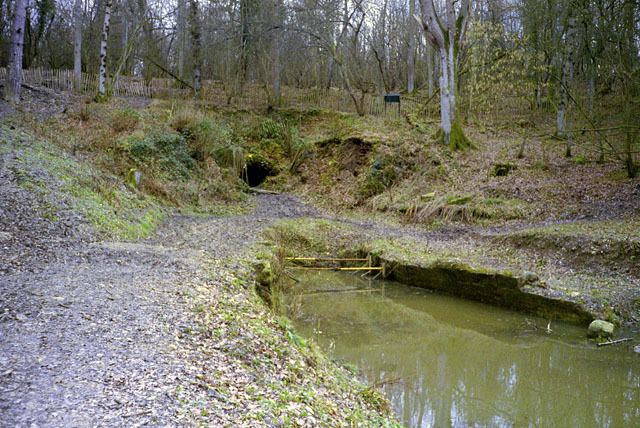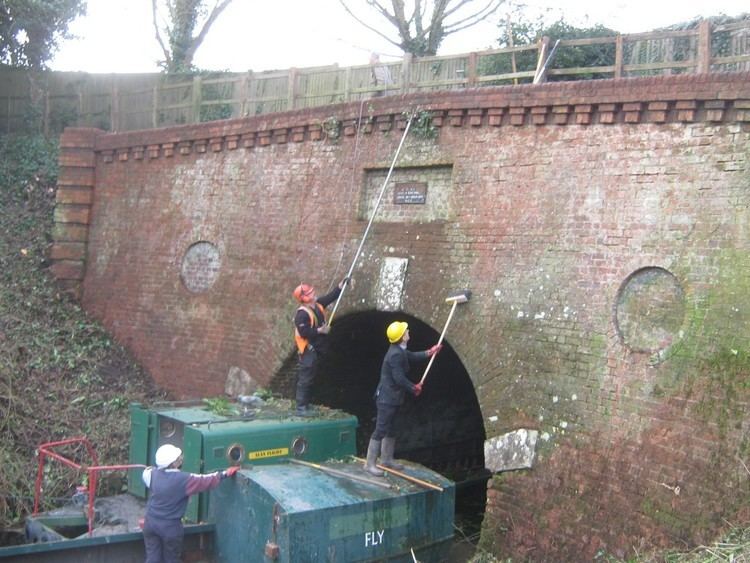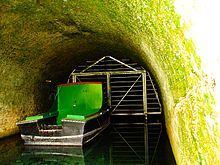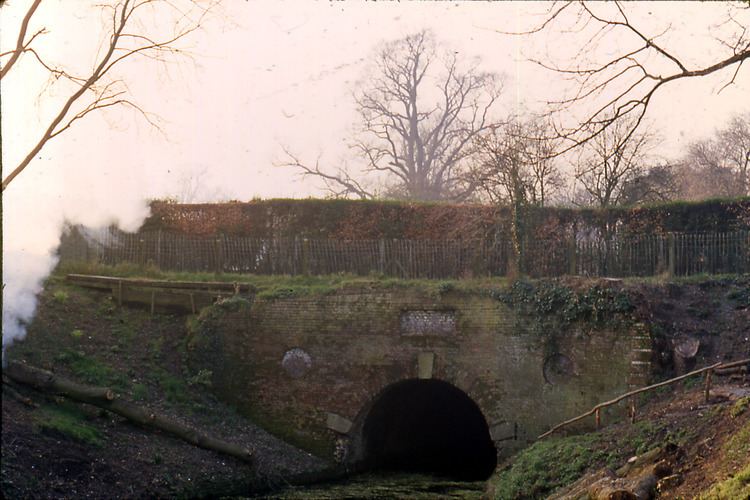Status Disused (collapsed) Opened 1794 Length 1,125 m | OS grid reference SU713517 Constructed brick Closed 1932 Waterway Basingstoke Canal | |
 | ||
The hurst to greywell tunnel
The Greywell Tunnel (grid reference SU713517) is a 0.6 hectare biological Site of Special Scientific Interest (SSSI) in Hampshire, England, notified in 1985. When opened in 1794 it was the longest tunnel on the Basingstoke Canal. It was closed due to a roof fall in 1932.
Contents

Greywell tunnel tylers red raven morris 2016 07 16
History

The Basingstoke Canal was authorised by an Act of Parliament obtained in 1778. The company was authorised to raise £86,000 by issuing shares, and an additional £40,000 if required. The route was around 44 miles (71 km) long, running from Basingstoke to the Wey and Godalming Navigations near Weybridge, with a large loop running to the north to pass around Greywell Hill. The loop cut through the grounds of Tylney Hall, owned by Earl Tylney, and he objected to the route. At the time, the American Revolutionary War was in progress, and no construction took place for some time. Finally, a favourable forecast of expected traffic was published in 1787, and the committee took action. A survey was made by William Jessop, who was appointed as engineer, and the contract for construction was awarded to John Pinkerton, part of a family of contractors who often worked with Jessop, in August 1788.

The route was changed, with the large contour-following route which had been surveyed around Greywell Hill being replaced by a tunnel through it, cutting nearly 7 miles (11 km) from the length of the canal. Construction started in October 1788, although Pinkerton was not initially responsible for the tunnel, the contract for which was awarded to Charles Jones. Jones had been dismissed by the Thames and Severn Canal company in 1788, after failing to complete the Sapperton Tunnel project. In his defence, he had been asked to build it bigger than originally specified and line it with bricks at no extra cost. He worked on Greywell Tunnel, but was again dismissed in 1789. Pinkerton had complained constantly about him. It is not clear whether Pinkerton supervised the cutting of the tunnel, but in 1789 the company sacked its brickmaker, and in 1790 required Pinkerton to ensure that the quality of the brick was adequate for the tunnel work. 223 yards (204 m) of tunnel had been completed by June 1791, and by November 1792 a similar distance was left to be completed.
The canal was opened on 4 September 1794, but two sections of the bank collapsed shortly afterwards, and parts of it were closed until the summer of 1795. The quality of the work on the tunnel was also criticised. The tunnel had no towpath so boats had to be taken through by legging, taking up to six hours to pass through the tunnel.
Trade on the canal was never as intensive as had been predicted, and several companies attempted to run it, but each ended up bankrupt. The last successful passage through the tunnel was probably in 1914 by the barge Basingstoke owned by Mr A J Harmsworth, carrying sand. The intention of this trip was to prove, at the request of the then owner of the canal, that it was still navigable and so avoid the possibility of closure under the Railway and Canal Traffic Act 1888. Harmsworth, the last trader working on the canal, bought the canal in 1923, but only the lower section up to Woking was used. The tunnel was finally closed when part of the roof collapsed in 1932, after which the canal to the west, including Basingstoke Wharf, was sold. It was still possible for canoeists to get through the tunnel until the late 1950s, but the blockage is now total.
SSSI
The tunnel is of interest for its bat populations: it has more roosting bats than any other site in Britain. The species involved are Natterer's bat (Myotis nattereri), Daubenton's bat (Myotis daubentoni), the whiskered bat (Myotis mystacinus), Brandt's bat (Myotis brandti) and the brown long-eared bat (Plecotus auritus). The tunnel consists of 880 yards (800 m) at the eastern end, which has been cut through chalk, and 153 yards (140 m) at the western end, with 197 yards (180 m) in between, where the bore has filled with soft clay as a result of the collapse. It was first studied for its bat populations in 1975, and was listed as an SSSI in December 1985, after a partial count of the population revealed 541 bats in the first 400 feet (120 m) of the eastern end, from which total numbers were estimated to be around 2,000 animals. The blockage, combined with several springs in the tunnel, creates an ideal micro-climate for the bats, which is maintained at around 10 °C (50 °F) all year. When the temperature outside the tunnel is colder than this, cold air flows into the bottom of the tunnel where it is warmed by the water, and warmer air flows out along the top of the tunnel. During the summer the air flow is reversed, with warm air flowing into the top of the tunnel and being cooled as it flows back out over the water. By 2006, there were some 12,500 bats roosting in the tunnel, which included the largest known colony of Natterer's bat.
